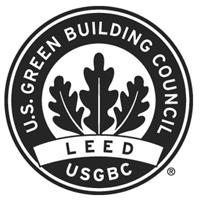Drip irrigation = cutting edge technology? You better believe it

We are working in a time where cutting edge technology has made an impact in our industry. The old comparison of irrigation controllers to lamp timers no longer applies. Today professional landscapers are asked to work with daily weather data, historical horticultural conditions and current soil moisture to make irrigation decisions. Granted, today's controller technology automatically makes most of these decisions in less than a millisecond, it still falls on the irrigation manager to insure proper installation and set up for these state of the art systems to operate properly. With all this technology there seems to be a few questions on how these products work with drip irrigation. The algorithms that smart controllers use in conjunction to calculate plant water requirement are based on three variables: plant type, soil profile.
Built into the algorithms most ET based smart controllers use, precipitation rate is often the base line which creates a potential problem were drip irrigation is concerned. Precipitation rate flies out the window when emitters are installed per plant requirements and are unequally spaced, even with equally spaced emitters as is the case with inline drip hose, it is impossible to generalize the capillary movement across all soil profiles and job sites.
On ET based smart controllers a work around that will accurately allow a drip zone to utilize the automatic adjustments smart controllers make is to use “precip” rate override setting with .25”/hour for .5 GPH emitters, .5”/hour for 1 GPH emitters and 1”/hour for 2 GPH emitters. While also changing the soil type to sandy loam and the slope to 0°. Be careful, this is only half of the equation, it is imperative that during the first few weeks of the controller operating in auto adjustment mode close attention must be paid to the condition of the plants. If the plants are not receiving enough water additional runtime can be added by utilizing the “+ water or add time” feature in the zone programming menu. If the plants are not receiving enough water the run time can be decreased using the same menu. When a drip zone has emitters with different flow rates the average can be calculated and applied to the precipitation rate ratio.
Embracing improved technology in our industry is a valuable tool to help keep irrigation decisions in the hands of landscape professionals. To ensure a systems success it is important to understand that every product has applications they work best in and as professionals it is our job to select the product that best fits the job requirement.



_.png)




















